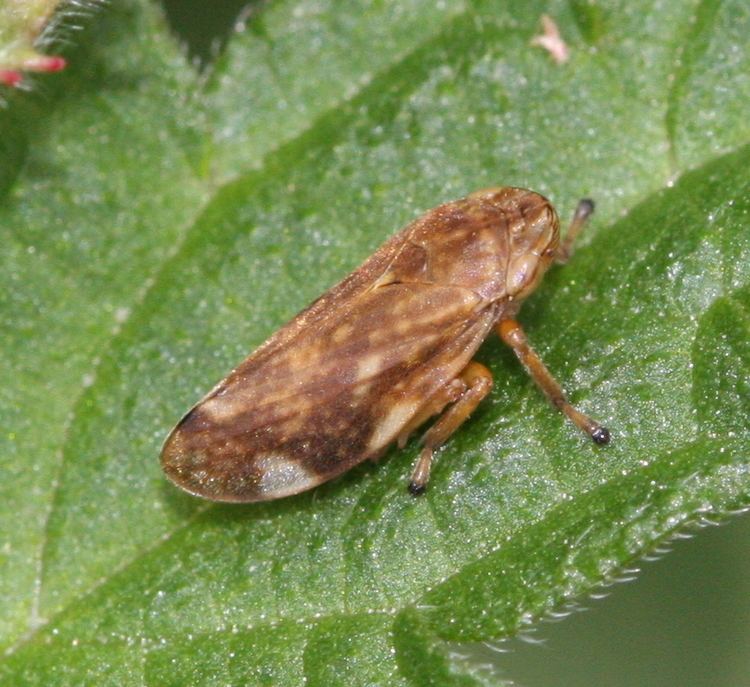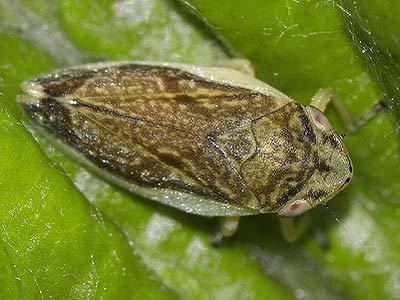Superfamily Cercopoidea Higher classification Philaenus Order True bugs | Rank Species | |
 | ||
Similar Philaenus, Insect, Froghopper, Aphrophoridae, Cercopidae | ||
Meadow spittlebug aphrophoridae philaenus spumarius adult
Philaenus spumarius, the "Meadow Froghopper" or "Meadow Spittlebug", is a species belonging to the family Aphrophoridae. The genus name "Philaenus" comes from the Greek "philein" meaning "love", while the species name "spumarius" is derived by the Latin "spuma" = "sparkling", referred to the foam nests. Therefore "Philaenus spumarius" may be translated as "foam lover."
Contents
- Meadow spittlebug aphrophoridae philaenus spumarius adult
- Meadow spittlebug cercopidae philaenus spumarius on grass stem
- Distribution
- Identification
- Habitat
- Life cycle
- References

Meadow spittlebug cercopidae philaenus spumarius on grass stem
Distribution
These 'froghoppers' are quite common and widespread. Their original distribution was restricted to the Palaearctic ecozone. It is present in most of Europe, in North Africa, in part of Russia, in Afghanistan and in Japan. It has been introduced in North America and Canada.
Identification

The species reaches a body length of 5–7 millimetres (0.20–0.28 in). Most females are slightly larger than the males. The coloration of the body is very variable (about 20 different colors are known). Usually they are yellowish, brownish or black, with brighter patches on a dark background, but also with dark markings on a lighter background.
Habitat

Philaenus spumarius is a very 'eurytopic' species, meaning that these froghoppers can tolerate a wide range of environmental factors and therefore exist in many different habitats. They live in almost all open land habitats and in open forests. They are absent only in very wet and very dry habitats. They are polyphagous, the host plant specificity is low, so that they can feed on a variety of plants, mainly grasses (Poaceae species), reed plants (Juncaceae species), herbs and sometimes trees. They have been identified on over 170 host plants.

The most common modes of locomotion are running and flying, but the most striking is their strong jumping ability, which is useful for escaping from predators.
Life cycle
The females lay eggs singly or in groups on the food plants of the larvae. A single female can produce up to 350 to 400 eggs. In unfavorable climatic periods, these froghoppers can survive in the form of eggs.
The larvae are well known for the self-generated foam nests, that can be observed in Spring in meadows (especially on Cuckoo Flowers, Cardamine pratensis and broom, Genista species). Their larvae in the foam nests are largely protected from predators and also get the necessary moisture for the development and temperature, so their mortality remains low even in bad weather. The larval stage lasts about 50 days. The adults leave the foam nest only when it is completely dried. This takes about ten days. The females mate soon after.
